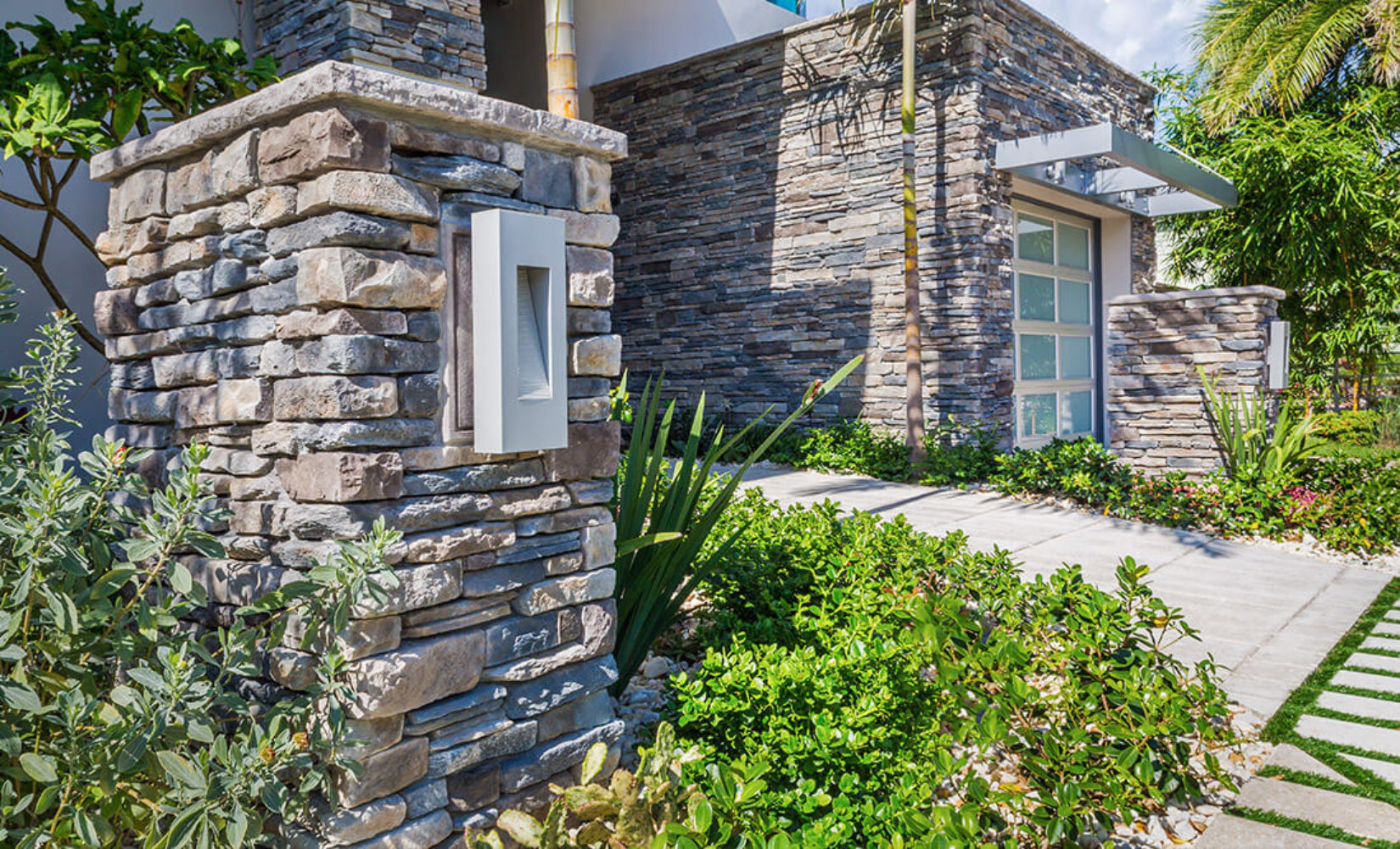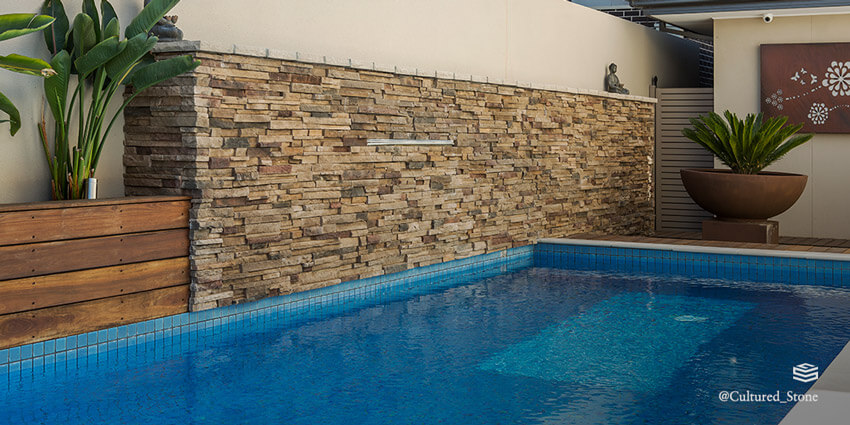
Who doesn’t love the beauty of natural stone? Did you know you can often achieve the look and feel of natural stone more easily and cost effectively with manufactured stone veneer?
Manufactured stone veneer is often as striking and beautiful as the natural stone it emulates. Also known as faux stone, manufactured stone veneer is a manmade material designed to replicate the look of natural stone in a variety of architectural applications ranging from exterior façades to unique statement walls. Some stone veneer products offer such an array of shapes, sizes, and color gradations that even a trained eye can find it hard to determine the difference between faux and natural stone without close inspection.

How Is Stone Veneer Made?
Manufactured stone veneer is composed of Portland cement, lightweight natural aggregates, and iron oxide pigment for coloration.
It has a surprisingly long history, however. The first stone veneer, initially manufactured in the late 19th century, was made of natural stone. Manufacturers basically sliced natural stone into thick-cut slabs, with its first appearance in the late 19th century made from thick-cut slabs of natural stone. Cement did not become part of its composition until the 1950s, and while cement is what gives architectural stone stability, unlike thick-cut natural stone, it cannot be used structurally.
At Cultured Stone, our products are cast in molds taken from carefully selected natural stone, using a process that artfully captures the finest details from the surface of the original stone. Faux stone even replicates the rough and unique textures of natural stone.
Related Reading: Green Building Materials: 5 Sustainable Resources for Your Next Project
Where Can You Use Manufactured Stone Veneer?
Architects and builders take advantage of the versatility and light weight of manufactured stone to employ it in many unique ways that move far beyond foundations and chimneys. One can install stone veneer over both metal and wood-framed walls, as well as over masonry substrates of CMU block or brick, and also over poured concrete, with proper installation procedures.
For builders looking to install manufactured stone veneer on fireplace facings and walls behind freestanding stoves, they can feel confident in Cultured Stone’s Class A fire rating with zero flame spread and zero smoke development—all properties that make faux stone comparable to natural stone in flame resistance.
If architectural plans call for stone placement in moisture-prone areas like walls near swimming pools or hot tubs, it’s a good idea to treat manufactured stone with a silane-based, non-film-forming, breather-type masonry sealer to increase its durability. When it comes to exposure to chemicals like chlorine, faux stone’s performance is similar to other types of concrete-based materials. Long-term chemical exposure can cause discoloration or fading. So if you’re using manufactured stone near pools or spas, be careful of spilling chemicals or other water treatments on the stone. If you do, be sure to hose them off immediately.

Cultured Stone’s products typically range from 8 to 12 pounds per square foot, so the product is significantly lighter than natural stone. And, unlike natural stone, one can install faux stone without any additional footings, foundations, or wall ties. This can substantially reduce installation time.
Related Reading: 3 Expert Architecture Tips: Design Smart Now To Avoid Costly Errors Later
How Does Faux Stone Compare to Natural Stone?
In addition to its design versatility, manufactured stone veneer often costs a third to half what natural stone does for the same project. In the case of Cultured Stone, each piece is hand-colored with iron oxide pigments that help the stone veneer maintain the colors and nuance of natural stone for decades to come. With thousands of individual molds and a commitment to ensuring no two pieces of manufactured stone are colored alike, Cultured Stone veneer can exhibit much of the same variation in shape, size, texture, and color as natural stone.
Like natural stone, stone veneer is virtually maintenance-free. Home and building owners merely need to wash the surface occasionally to remove dust or dirt.
At one-third to half the cost of natural stone once installed, stone veneer can help architects and builders achieve cost efficiencies, while not sacrificing custom details. Manufactured stone also has a 2 percent waste factor versus a 10 percent or greater waste factor for natural stone.
Manufactured stone’s market share in the masonry industry is growing, given its design flexibility, speed of installation, and affordability. However, it’s important to understand that not all architectural stone products are of equal quality. Make sure to perform due diligence on the manufacturer before purchasing, paying careful attention to thickness, pattern repetitions, and coloration.
Manufactured stone veneer can be significantly easier and more cost-effective to install than natural stone. But before you get started, be sure to check out our quick guide for proper stone veneer installation.



